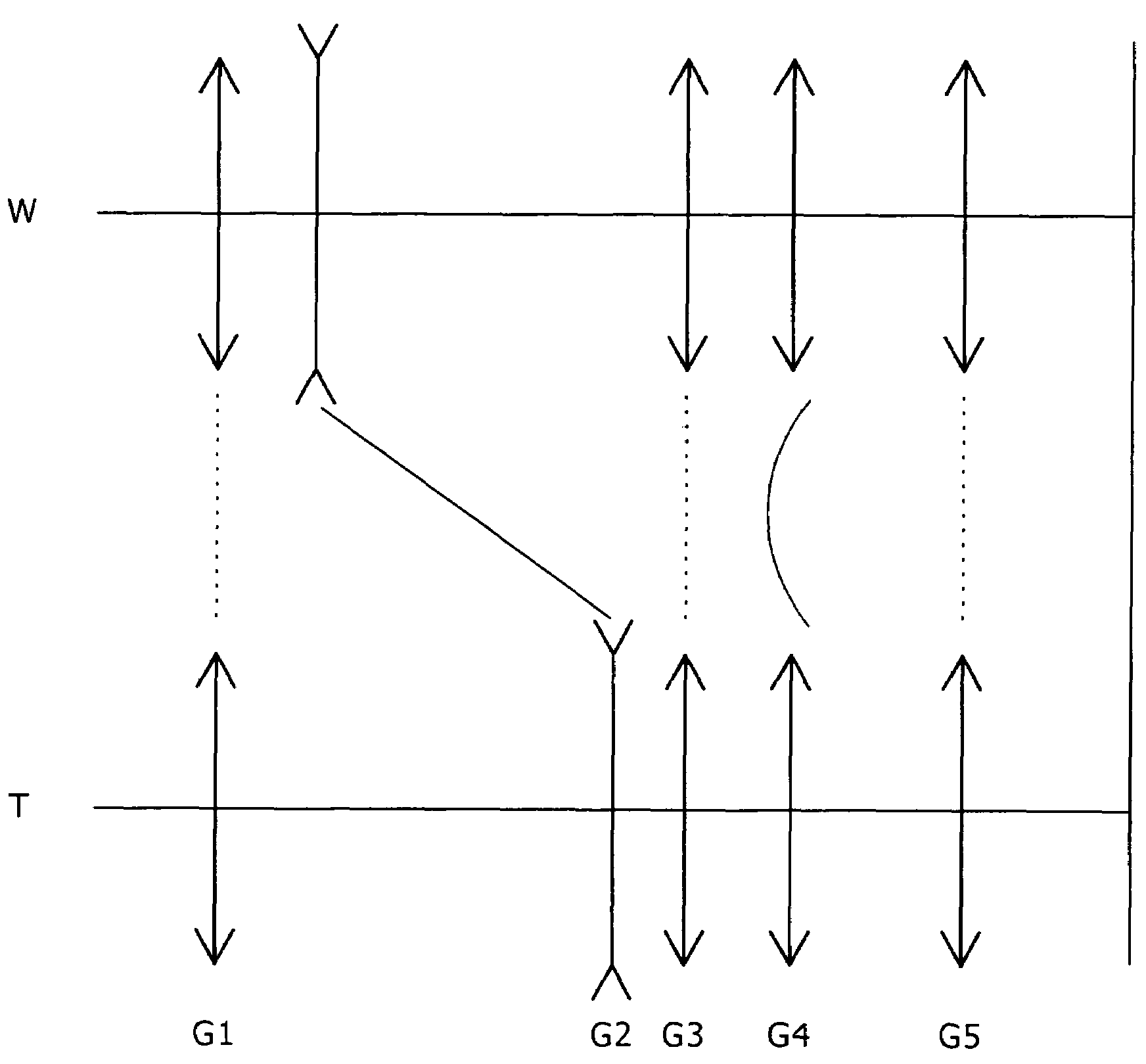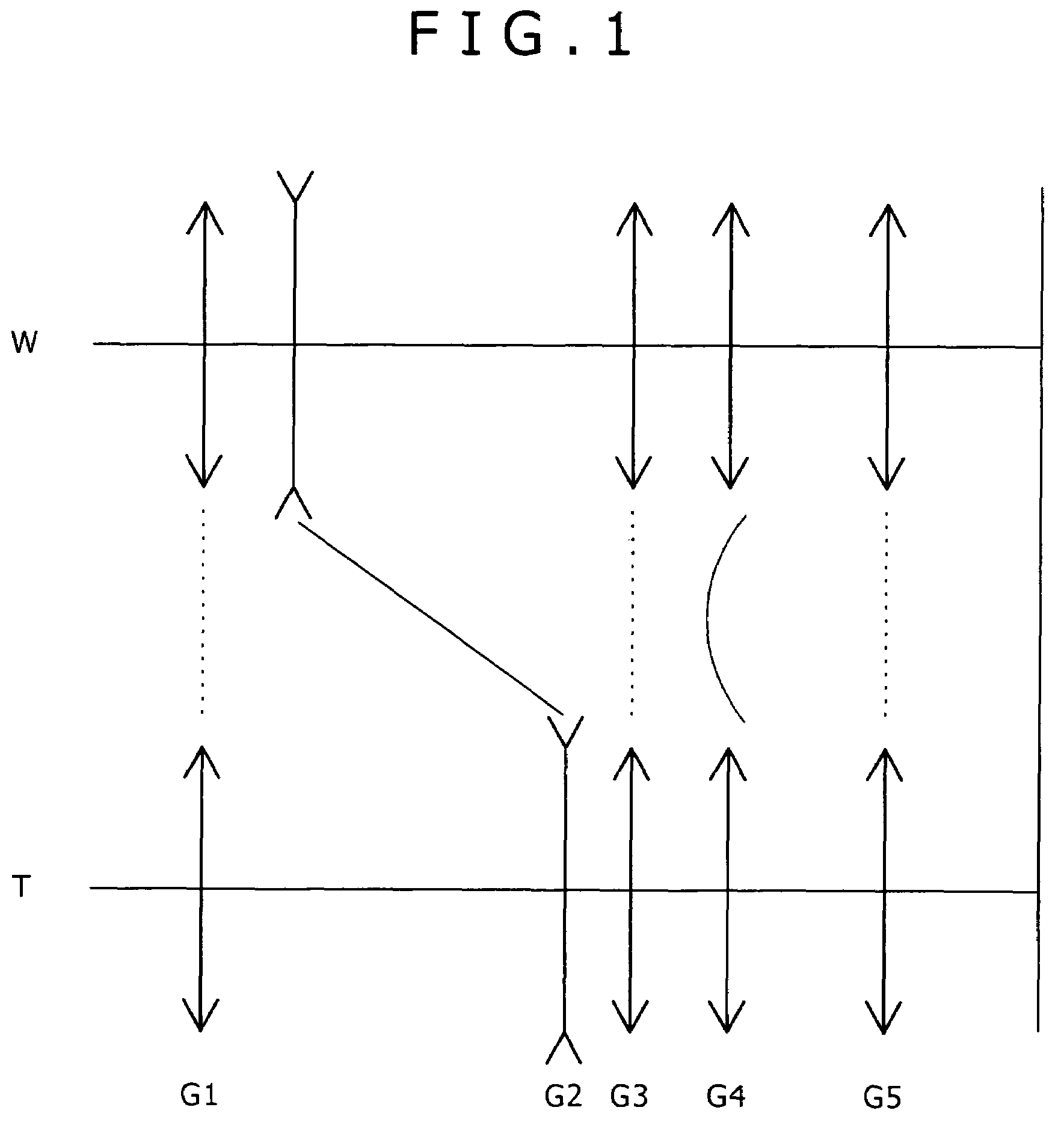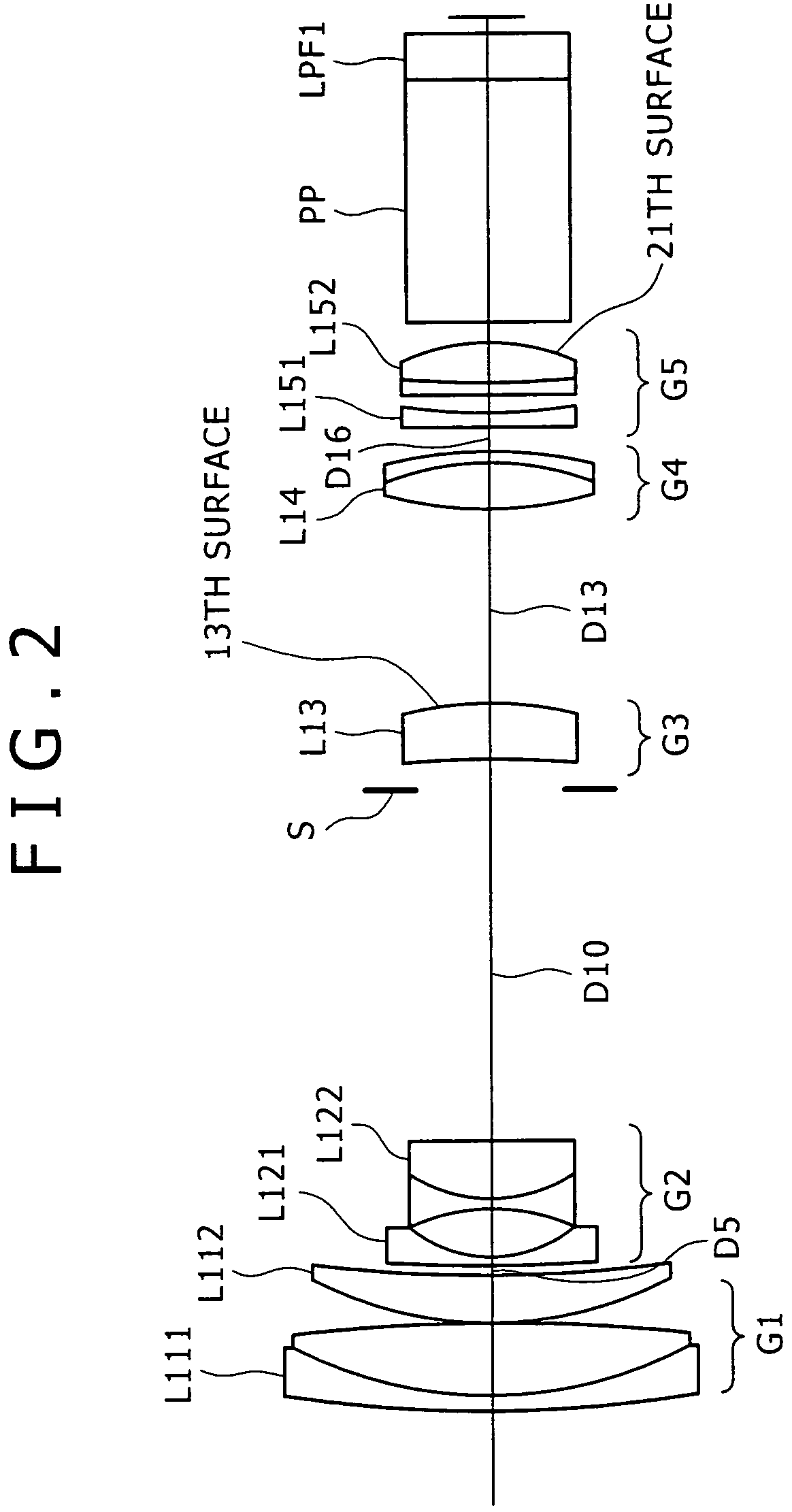Zoom lens and imaging apparatus
a zoom lens and imaging apparatus technology, applied in the field of zoom lenses and imaging apparatuses, can solve the problem of large blur in images, and achieve the effect of high optical performan
- Summary
- Abstract
- Description
- Claims
- Application Information
AI Technical Summary
Benefits of technology
Problems solved by technology
Method used
Image
Examples
first embodiment
[0086]FIG. 2 shows a lens configuration according to the present inventive zoom lens, in which a first lens group G1 is formed of a cemented lens L111 of a meniscus-shaped negative lens with the convex surface facing the object side, and a positive lens L112 with the convex surface facing the object side; a second lens group G2 is formed of a negative lens L121 with the concave surface facing the image side, and a cemented lens L122 of a both-side concave shaped negative lens and a positive lens with the convex surface facing the object side; a third lens group G3 is formed of a positive meniscus lens L13; a fourth lens group G4 is formed of a cemented positive lens L14 of a both-side convex lens and a meniscus-shaped negative lens with the concave surface facing the object side; and a fifth lens group G5 is formed of a negative lens L151 with the concave surface facing the image side, and a cemented positive lens L152 of a both-side convex lens and a meniscus-shaped negative lens w...
second embodiment
[0101]FIG. 9 shows the lens configuration of the present inventive zoom lens, in which a first lens group G1 is formed of a cemented lens L211 of a meniscus-shaped negative lens with the convex surface facing the object side, and a positive lens L212 with the convex surface facing the object side; a second lens group G2 is formed of a negative lens L221 with the concave surface facing the image side, and a cemented lens L222 of a both-side concave shaped negative lens and a positive lens with the convex surface facing the object side; a third lens group G3 is formed of a negative meniscus lens L231 and a both-side convex lens L232; a fourth lens group G4 is formed of a cemented positive lens L24 of a both-side convex lens and a meniscus-shaped negative lens with the concave surface facing the object side; and a fifth lens group G5 is formed of a both-side concave lens L251 and a both-side convex lens L252.
[0102]In the second embodiment, an aperture diaphragm S is disposed on the obj...
third embodiment
[0116]FIG. 16 shows the lens configuration of the present inventive zoom lens, in which a first lens group G1 is formed of a cemented lens L311 of a meniscus-shaped negative lens with the convex surface facing the object side, and a positive lens L312 with the convex surface facing the object side; a second lens group G2 is formed of a negative lens L321 with the concave surface facing the image side, and a cemented lens L322 of a both-side concave shaped negative lens and a positive lens with the convex surface facing the object side; a third lens group G3 is formed of a negative meniscus lens L331 and a both-side convex lens L332; a fourth lens group G4 is formed of a cemented positive lens L34 of a both-side convex lens and a meniscus-shaped negative lens with the concave surface facing the object side; and a fifth lens group G5 is formed of a both-side concave lens L351 and a both-side convex lens L352.
[0117]In the third embodiment, an aperture diaphragm S is disposed on the obj...
PUM
 Login to View More
Login to View More Abstract
Description
Claims
Application Information
 Login to View More
Login to View More - R&D
- Intellectual Property
- Life Sciences
- Materials
- Tech Scout
- Unparalleled Data Quality
- Higher Quality Content
- 60% Fewer Hallucinations
Browse by: Latest US Patents, China's latest patents, Technical Efficacy Thesaurus, Application Domain, Technology Topic, Popular Technical Reports.
© 2025 PatSnap. All rights reserved.Legal|Privacy policy|Modern Slavery Act Transparency Statement|Sitemap|About US| Contact US: help@patsnap.com



